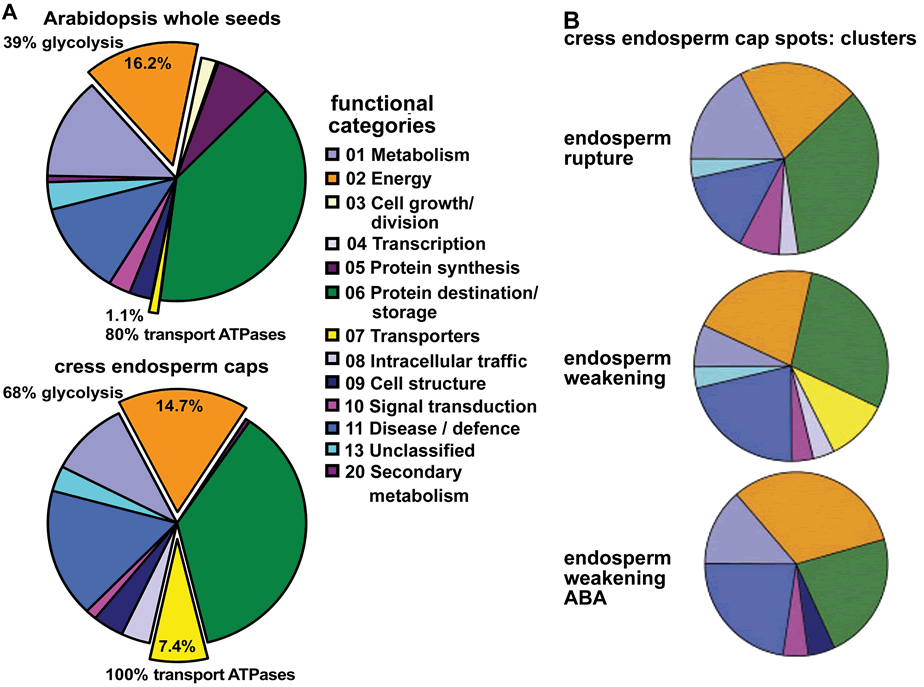Proteomics 10: 406-416 (2010)
Proteomics reveal tissue-specific features of the cress (Lepidium sativum L.) endosperm cap proteome and its hormone-induced changes during seed germination [W]
Centre National de la Recherche Scientifique-Université Claude Bernard Lyon-Institut National des Sciences Appliquées-Bayer CropScience Joint Laboratory (UMR 5240), Bayer CropScience, Lyon, France (C.J., D.J.)
Centre d'Analyse Protéomique de Marseille, Institut Fédératif de Recherche Jean Roche, Marseille, France (M.B.)
Received July 29, 2009; revised November 3, 2009; accepted November 5, 2009
DOI 10.1002/pmic.200900548

Figure 4. Proteins belonging to the functional categories energy (02), protein destination and storage (06) and disease and defense (11) are overrepresented in the identified cap proteome.
(A) Comparison of the distribution of functional categories in the Arabidopsis whole seed proteome and the cress endosperm cap. Numbers in the pie pieces give the fraction of the identified proteome represented by the respective functional categories. Numbers next to the pie pieces are percentages of the functional descriptions ‘‘glycolysis’’ and ‘‘transport-ATPases’’ in the functional categories 02. energy and 07. transporters, respectively. Functional categories and their color codes are listed.
(B) Clustering and distribution of functional categories of the 64 spots representing only one protein. Protein expression signatures are shown for the endosperm cap after endosperm rupture (cluster 2, ‘‘endosperm rupture’’, 29 proteins), and during endosperm weakening in the absence (cluster 3, ‘‘endosperm weakening’’, 28 proteins) and in the presence of ABA (cluster 4, ‘‘endosperm weakening ABA’’, 22 proteins). A signature for cluster 1 (constant abundance) is not shown because it contains only 11 proteins. All clusters can be found in Supporting Information Table S1. Functional categories and their color codes are listed under (A).
| Article in PDF format (365 KB) Supplemental data file (5 MB) |
|
|
|
The Seed Biology Place |
Webdesign Gerhard Leubner 2000 |